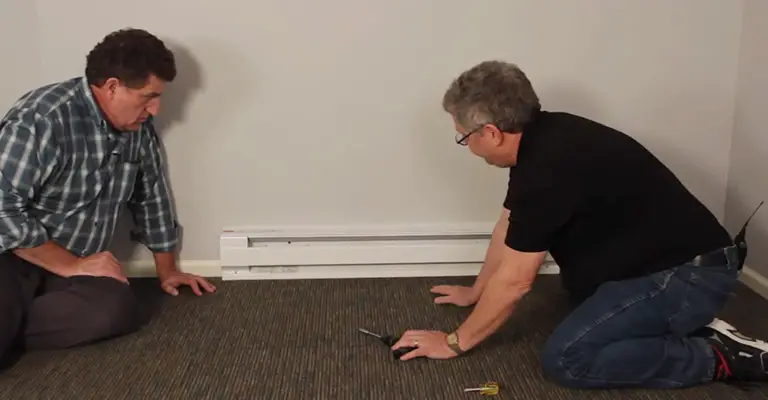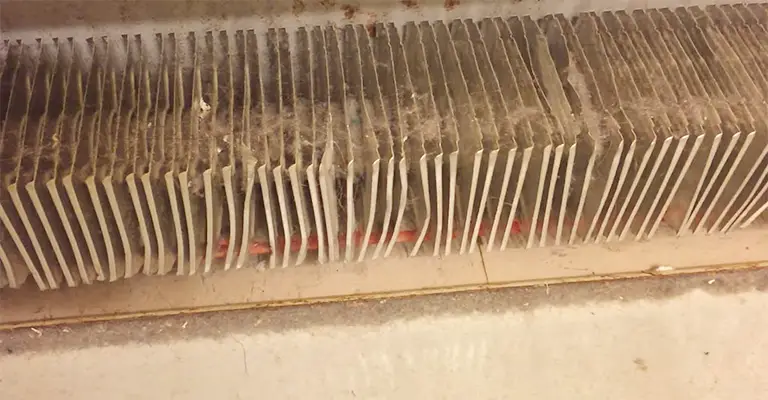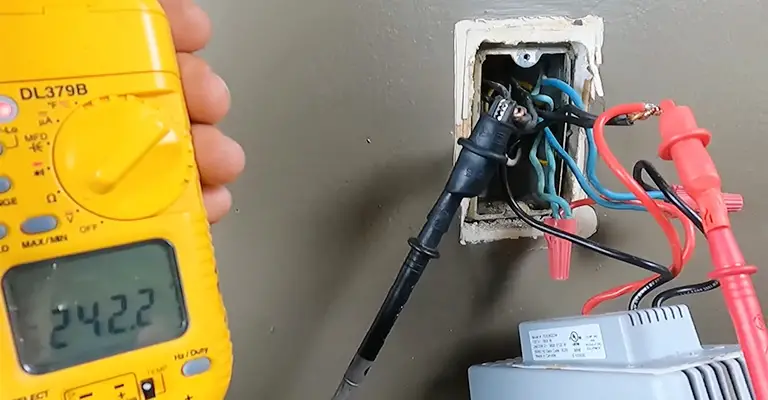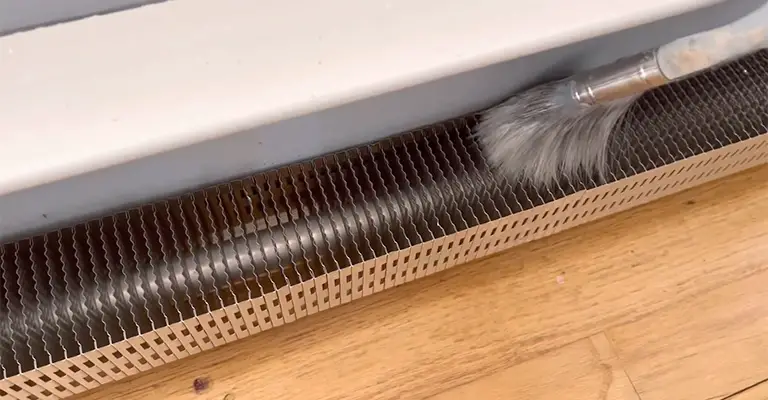It can be concerning and annoying if you notice a loud banging noise from your baseboard heater. The good news is that there are several potential causes for this issue, and it may be something that can be easily fixed.
In this blog post, we’ll explore some common causes of baseboard heater banging noises and provide tips for troubleshooting and resolving the issue.
Whether you’re dealing with a new installation or an older model, there are steps you can take to identify the root cause of the noise and get your baseboard heater back to working smoothly and quietly.
There are several potential reasons why your baseboard heater may be making a banging noise. Some common causes include:
Air in the heating system: If air is trapped in the heating system, it can cause the heater to make a banging noise as it is forced through the system. This is often due to a failure in the system’s air vent, which allows air to enter the system.
Loose or damaged parts: If the heater has loose or damaged parts, it can cause it to make a banging noise as it operates. This may be due to wear and tear or the result of an accident or improper installation.
Water hammer: If the heater is connected to a plumbing system, the banging noise may be caused by the water hammer.
This occurs when the water flow in the pipes is suddenly stopped or slowed, causing a shockwave to travel through the pipes and cause them to bang against each other or against the walls of the pipes.
If you are concerned about the noise your baseboard heater is making, it is recommended that you have a professional inspect and service the heater to determine the cause of the issue and make any necessary repairs.
Noisy Baseboard Heaters – Why Bother?

Across Canada and the US, electric heaters are common heating systems and are even used as budget heating systems.
Due to their low cost and ease of installation, they are often chosen because of their affordability and speed. Heaters with electric baseboards are zone heaters.
Heaters are typically installed underneath windows where their rising air counteracts cooling air falling from the glass as the heater’s rising air rises, and thermostats inside the room control them.
If homes are old, the insulation isn’t that great, and the air permeability is high, these types of heaters will probably not be the best choice for home heating – depending, of course, on electric, gas, and heating fuel costs.
For cold climates, we recommend investing in better insulation first and conducting a blower door test before installing a full house of baseboard heaters.
Nevertheless, electric heating can still be a good option for reasonably efficient homes.
Installing electric baseboard heaters in well-insulated green homes is an economical and eco-friendly option if the electricity consumed is sustainably generated.
Many residents find baseboard heaters and the cacophony of noise they emit to be the most irritating thing in their homes, particularly light sleepers.
How Do I Stop My Baseboard Heater From Banging?
If you have one, you will likely notice pinging and clanking when first turning on your baseboard heating system in the fall.
There’s nothing wrong with a little noise, but excessive, continuous noise is not. We’ve compiled a list of the most common baseboard heater noises and how you can silence them.
Banging

The boiler is likely causing a banging sound. As soon as the circulator starts, the zone valve closes.
Consequently, the zone valve opens slightly as pressure bounces against the air in the system, causing a banging sound to be heard. See if your boiler’s pressure gauge is between 12 and 20 PSI: the recommended range.
Pinging
Heat is distributed through metal fins on the baseboard heaters when heated. The pinging noise is caused by the fins rubbing against one another when bent, crushed, or otherwise rubbing against one.
It is possible to correct this problem by removing the cover from your heater and gently straightening out the fins. Alternatively, you can slide the wax paper between the fins and the baseboard, where they contact each other.
Knocking

Heating pipes expand as hot water enters them, creating a knocking sound when they rub against the floors. The sound can be muffled by placing wax paper or insulators between the pipes and the floor.
Hammering
When you hear hammering noises inside the boiler, the water probably has become too hot. If the temperature gauge reaches over 20 degrees Fahrenheit, your boiler needs to be shut off, and a licensed heating technician should be contacted immediately.
Check That The Voltage Is Correct And The Amperage Of Thermostats

An electrical power supply connected to a 120-volt baseboard heater can cause humming noises, burning smells, or worse, a fire.
There is actually a 240v outlet in many US homes for power tools. An amateur electrician might try to connect to one of these outlets.
Confirming the power supply voltage before ordering or replacing any electric baseboard heater is crucial.
It is also important to note that the ampacity of electric baseboard heaters must correspond to the thermostat’s ampacity.
If your baseboard heater draws 2,500 W, then you should use a 3,000 W thermostat to be sure that you are covering the startup amps and to provide a safety margin.
Loosening Or Tightening Some Screws Can Stop The Noise From A Baseboard Heater
Noise can be caused by poorly installed heating elements inside electric baseboard heaters or by installing the heater itself on an uneven wall or baseboard. There may be a few screws that need to be readjusted to fix this problem.
When the screws are slightly loose, the metal can expand and retract quietly instead of snagging up and releasing with a ping. That’s the result!
- The screws can rattle and buzz if they are too loose.
- During expansion and contraction, they can cause sudden pings, bangs, and crackling noises, depending on how tight or loose they are.
- The case may distort if it is too tight, which will cause the heating element or cover to move around inside the case and make noises.
So, It’s Normal For Baseboard Heaters To Be Noisy?

In addition to emitting different sounds, baseboard heaters frequently make strange noises. There is nothing abnormal about clicking and buzzing noises, except that they happen too frequently and in too many places.
Generally, these sounds are caused by sudden changes in temperature or by sudden heating up when they are turned on after long periods of shutdown.
The baseboards’ metal components expand when starting and contract when cooling, causing noises.
Likewise, in the most basic versions of electric heaters, many people do not realize that the thermostat does not control the temperature.
Depending on the temperature of the air circulating, the thermostat regulates when the heaters and air conditioners turn on and off.
Bimetallic thermostats that cost less or are older let the heaters cool off before reactivating, resulting in a vicious cycle of metal cooling and heating more frequently and forcefully rather than gently.
As a result, noise in baseboard heaters is likely to increase, and they may fail prematurely due to high levels of thermal shock.
Cleaning Baseboard Heaters And Setting The Fins For Quiet Running

You should carefully remove the front cover from the heater after you’ve shut off the electricity and checked that it’s cold.
Then, inspect the heater element and fins (if any). Are they dusty, full of fluff, dog or cat hair, or clogged with cobwebs?
They are probably insufficiently cooled or have been turned off for quite some time. Even though it burns off when the heaters are used, it smells foul and can trigger allergies.
The best method of cleaning dust out of the vacuum tube is to gently brush it off with an appropriate vacuum attachment or a soft paintbrush. A heater should be clean to function properly.
Correct Positioning Of Baseboard Heaters For Quiet Operation
To allow the cooler air on the floor to flow under and through the electric heating element or the fins on a water-heated unit, baseboard heaters should sit level above the floor and three-quarters of an inch above the carpet or rug.
It may be necessary to move the heater up the wall to provide the required clearance underneath or to trim the carpet around the base of the heaters if the carpet is especially thick.
A system that cannot circulate air will not be able to heat or cool efficiently. When batteries are close to something combustible, such as a carpet, they can prematurely fail or, in the case of electric ones, catch fire.
They can also be noisy if the airflow is inadequate or incorrect because the thermostats won’t function correctly.
Once you have made sure that the baseboard heaters are correctly positioned on the wall, make sure that they are not covered by curtains when closed or by furniture backs. Air circulation is essential.
Final Words
If none of the above work, electric baseboard heaters can always be replaced, or a heating technician can be contacted (although the cost may be similar).
Try finding better quality electric baseboard heaters online with centrally controlled electronic thermostats if there are only one or two units.
A rethink might be needed if your home has multiple baseboard heaters that need replacement or a diesel-fired heating fuel boiler and noisy water-heated baseboard heaters.
If you want to reduce your heating costs, you should do your best to improve the home’s insulation first – for example, by adding insulation to the exterior walls from the outside.
Installing a high-efficiency air-to-air heat pump would greatly reduce your energy usage and increase your heating output.
In addition, we have found that high-efficiency electric heat pumps are more comfortable than baseboard heaters because they reduce relative humidity and circulate the air throughout the home.






